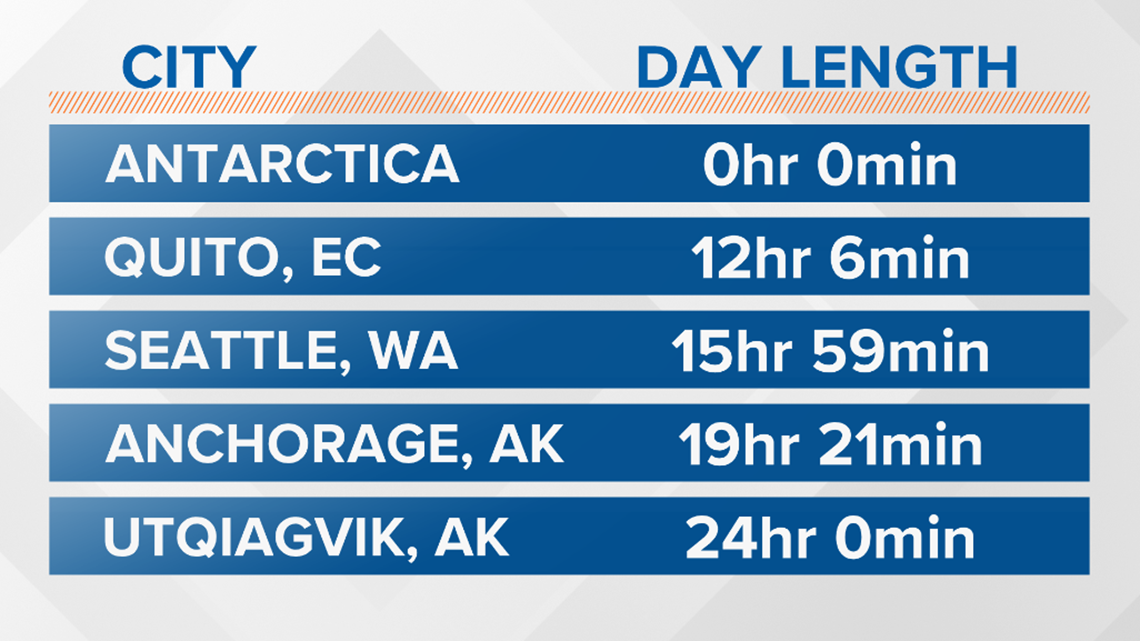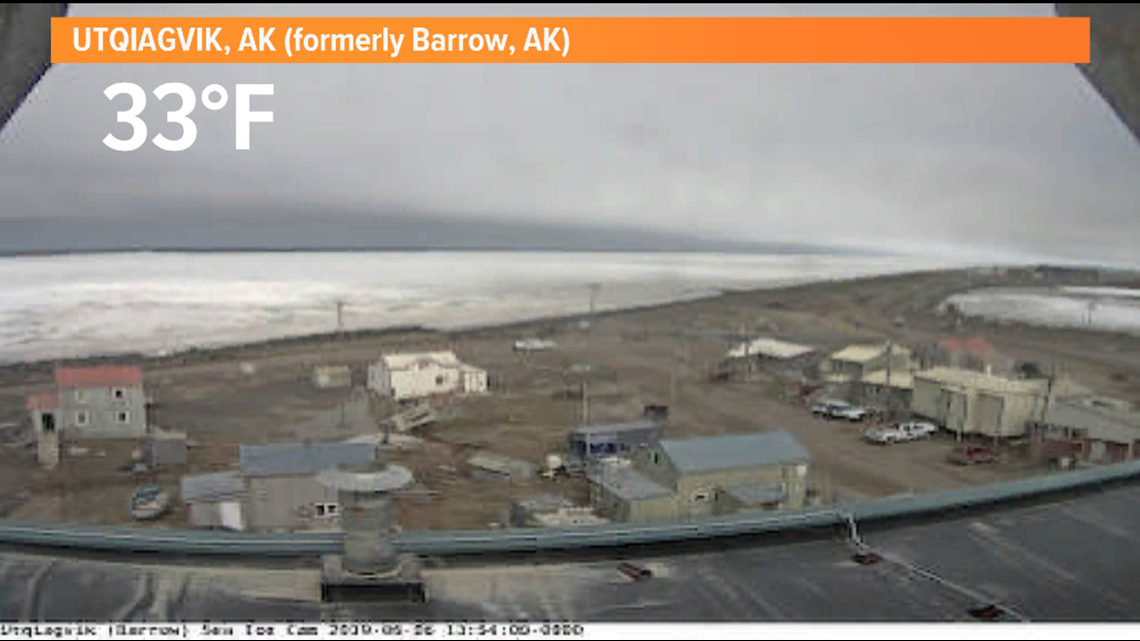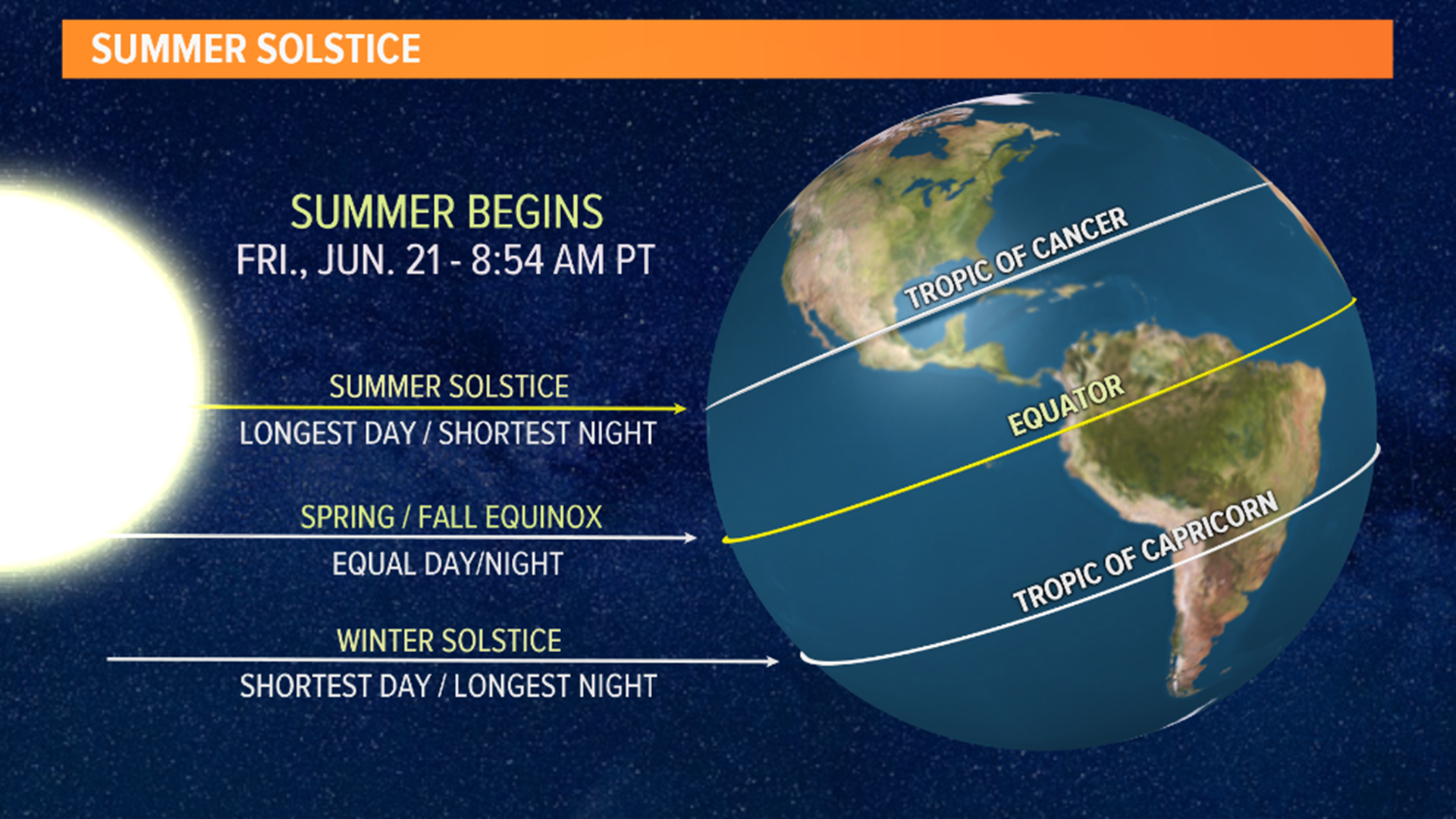June 21, the official start of summer in the Northern Hemisphere, and our longest day of the year, has officially arrived.
So what does that really mean? The earth is tilted on its axis by 23.5 degrees. As we revolve around the sun, direct rays of sunlight hit different parts of earth during different times of the year. Nowadays, direct rays of sun are aiming at the Tropic of Cancer, the furthest north they get. That means that if you're in the Northern Hemisphere, these are the longest days of the year. If you're in the Southern Hemisphere, these are the shortest days of the year.


Below is a list of places on the planet and how much daylight they get on June 21. On the summer solstice, Seattle will get nearly 16 hours of daylight.


In far northern Alaska, such as Utqiagvic, daylight reigns supreme. The sun is up 24 hours a day, and their next sunset isn't until early August.


In the meantime, Antarctica is in complete darkness, and the sun won't rise for several months.
After June 21, days will start to get shorter again. However, the nicest, warmest days of the year will happen later this summer in July and August. That has to do with a something called seasonal lag.
Seattle celebrates the summer solstice every year with a parade and festive atmosphere in Fremont. See more from this year's event on Saturday, June 22:


